Urban Sport Cruiser Shootout
Harley-Davidson Roadster vs. Indian Scout vs. Moto Guzzi Bobber vs. Victory Octane
A Roadster, Scout, Bobber and Octane roll into a bar…
With names like those a joke is almost imminent. Determining the best urban sport cruiser among these four, though, is serious business – or as serious as can be considering the clowns involved in the process. At least no one here is wearing creepy face paint, baggy polka-dot lounge suits and oversized shoes, we just naturally look funny. Except Troy, he’s a handsome devil.
The looker among these bikes goes to the Harley-Davidson, the Roadster handily winning the Cool Factor category of the Scorecard, which judges things like appearance, desirability, and poser value. It’s a subjective category, one with which you might disagree, but among the four of us, we found the Roadster to exemplify the brawny, sporty, streetfighter cruiser of the bunch. The Roadster’s low handlebars, inverted fork, and shorty rear fender certainly look the part, although when we get into performance figures, the Harley is more of a sheep in wolf’s clothing.
First glance at the above dyno chart depicts the H-D with a substantial torque advantage compared to the other bikes. And even though the Roadster tips the scales the most (567 wet pounds, but only one pound more than the Scout), it delivers a category-winning 7.7 pounds per pound-foot of torque – the only bike in the 7s (see Scorecard below).
2016 Harley-Davidson Roadster First Ride Review
“The motor feels fairly pedestrian for such a cool bike with a tint of performance,” says King Clown Kevin Duke. “Immense flywheel weight makes the engine slow to rev and slow to wind down, generally feeling a little sluggish in this group.”
Moving on to horsepower we find the tables have turned between the Roadster and the Polaris brothers. Equipped with the more modern renditions of internal combustion efficiency, the Scout and Octane rev higher, faster and make substantially more horsepower than either the H-D or Guzzi.
“The Octane and the Scout may pull away stronger out of a corner, but the seamless power delivery of the Harley encourages getting on the gas earlier,” says Evans “Jester” Brasfield. “What you get with the Scout, however, is arguably the most ass-kicking engine of the bunch. Only the Octane can challenge it, but the Scout wins if you value smooth, predictable power delivery.”
Coming in last place, the Moto Guzzi Bobber is certainly struggling when it comes to horsepower and torque production against the larger-displacement machines. Factoring in weight, the lighter Guzzi can’t overcome its competitors even though it owns the lowest curb weight of 473 pounds – a 76-pound advantage compared to the next lightest bike, the Octane, at 549 pounds.
“If this were merely a horsepower contest, the Guzzi would get killed in this test,” says Clown Beauty Troy Siahaan. “However, as a sum of its parts, it would probably be the bike I’d park in my garage. It suits my quirky tastes and is enjoyable to ride.”
Too bad we don’t have a Quirkiness category in the Scorecard to help advance the Bobber’s standings, but if you’re familiar with Guzzis – past or present – you understand that to which Clown Beauty is referring.
“I like the Guzzi’s character,” Clown Beauty elucidates. “Tilting left-to-right when you gas it at a stop, the air-cooled two-valve engine is just cool. Sounds good, too.”
And you can find a similar sentimentality from Duke.
“I love the Guzzi for what it’s not,” says King Clown. “It’s a cruiser, but one that exists on its own terms. It’s a V-Twin, but a uniquely arranged one. It’s not stretched out to look bigger and badder than it is, but rather it feels like a roadster with a slightly more relaxed stance. The Bobber is cool in ways the others are not.”
Jester is the one clown among us whom the Guzzi’s charms failed to allure. “I really wanted to like the V9 Bobber, but I just couldn’t pull it off – which is disappointing because I am really fond of the larger-displacement versions of the Guzzi engine,” he says. “Yes, the Bobber is pretty, and yes, it is out gunned displacement-wise in this test, but for me, it dies the death of a thousand cuts.” Evans yammers on for a while, and we’ll get to the heart of his gripes, but for right now let’s refocus our attention on the Twins that were separated at birth.
We gave Evans such a hard time after he returned from the 2017 Victory Octane Press Launch. Duped into thinking Victory was about to introduce a genre-busting model based on the Project 156 Pikes Peak racer, the Octane was the incarnation of unmet goals and dashed dreams. Jester, though, was steadfast in his assertion of the Octane being more than an Indian in Victory clothing.
Having now ridden both, I can better see his point, and probably owe him at least a courtesy apology, but, being the clown of infinite obstinance, I’m not rendering one. True, there are ever more differences between the two than I would have imagined – details that aren’t easily recognizable from photos, seating and performance differences, too. For $1,100 extra, though, I’ll take what is, I think, the better styled, more attractive Scout that’ll have better resale value later, and more refined performance now. On this, even Jester agrees.
“The engine, with its bump in displacement and 7% shorter final drive, launches the Octane off the line with tire-smoking authority,” says Brasfield. “However, this aggression comes at the cost of a bit of the refinement that characterizes the Scout. Where the fuel metering is smooth on the Indian, it’s ultra-responsive to the point of abruptness on the Victory.”
King Clown isn’t making any apologies either. “It’s abrupt coming back on throttle, a condition nicely tuned out on the Scout,” he says of the Octane. “I’m not entirely sold on the idea the Octane is a different bike than the Scout. It’s pretty much a Scout with a punchier motor and with a few minor fit/finish details left off.”
Case closed, more or less, between these two bikes, and the sentiments are reflected in the Scorecard where the Scout holds a 0.73% advantage over the Octane in the subjective scoring categories. In the final tally, though, the Octane edges out the Scout by 0.62% when the lesser price and weight, and better performing engine of the Victory are accounted for. Damn those concrete objective scores!
In what may seem a surprising twist of events, the Guzzi managed a comfortable third place in this shootout, regardless Jester’s denunciations. Which are…
“My knees bump up against the cylinders and the faux intake covers,” says Brasfield. “The seat is stylish – and period correct – but it is hard and uncomfortable. The Bobber has the least ground clearance of the gathering. The clutch thunks as it is engaged at low engine speeds. The beautifully designed switches were angled in a way that made them awkward to use. The net result was that I was always happy to move on to one of the other bikes when the time came to switch mounts.”
Clown Beauty and I, however, are of the opinion that between the Guzzi and Harley, the Bobber is the bike we’d preferably have in the garage. At nearly the same height as Jester, my knees, too, bump into the protruding cylinders, but the Guzzi’s seating position is still the better option between it and very leaned forward Roadster, with its ridiculously wide pegs positioned exactly where you want to place your feet every time the bike’s at rest. Also, light makes right and the Bobber is 94 pounds less than the H-D, even more if you allow for the Harley feeling heavier than it actually is. The one complaint we could all agree on, is the Bobber’s overbearingly intrusive traction control.
“Guzzi TC is annoying because it’s too intrusive,” says Clown Beauty. “It activates simply leaving a light and giving medium throttle. I found it much better to just turn TC off.”
And while in the off position, Duke discovered that “ironically, for the bike with the smallest engine, the V9 was the only one I was able to wheelie.”
Even though he couldn’t get it to wheelie, King Clown made a good case for the Harley. “The Roadster is the one of this group that grabs me hardest,” says Duke. “Its finishes are fabulous, its stance is athletic, and its lovely air-cooled engine looks like it fell out of a WW2 airplane. Although it couldn’t be my only bike, I could make a great case for the Roadster as a second or third bike in the garage.”
But in the end it was only Jester choosing the Roadster over the Guzzi. “While my colleagues may disagree with me, I think the suspension works quite well for the speeds the Roadster generates. Though slow, the steering is predictable, and the bike is dead stable when leaned over in a turn.”
Slow, however, pretty much sums up the Roadster. Even in a top-gear roll-on against the much smaller-capacity Bobber, the Roadster barely managed to edge away from the Italian. Personally, the Guzzi’s price tag of $10,490 (cheapest of the bunch by $9 over the Octane) is a little hard to swallow. Were it priced a thousand dollars less, I could easily reconcile the money spent over the others in the group.
When the dust – or maybe that was LA smog – settled, our winner from 2014’s seven-bike Bout With The Scout shootout lost to its Octane cousin by less than one percent. Maybe this shouldn’t be surprising considering the bikes are, to some degree, one-and-the-same. The differences are minimal, but enough for the prospective buyer to give each its due before making a purchase.
Between these four, the Polaris bikes were our clear favorites, although there are cases to be made for both the Bobber and Roadster. We’re not clowning around when we say that, depending on your criteria of what makes a good urban sport cruiser, each of these motorcycles is a winner if it’s the one sitting in your garage.
2016 Urban Sport Cruiser Shootout Scorecard | ||||
|---|---|---|---|---|
Harley-Davidson Roadster | Indian Scout | Moto Guzzi V9 Bobber | Victory Octane | |
| Price | 89.3% | 90.4% | 100% | 99.9% |
| Weight | 83.4% | 83.6% | 100% | 86.2% |
| lb/hp | 76.1% | 92.4% | 66.2% | 100% |
| lb/lb-ft | 100% | 89.5% | 75.5% | 93.9% |
| Total Objective Scores | 86.9% | 88.3% | 90.3% | 94.3% |
| Engine | 80.0% | 91.3% | 83.4% | 91.3% |
| Transmission/Clutch | 76.3% | 86.3% | 78.1% | 86.3% |
| Handling | 75.0% | 86.3% | 81.9% | 86.3% |
| Brakes | 79.4% | 85.0% | 78.8% | 85.0% |
| Suspension | 76.3% | 80.6% | 77.5% | 79.4% |
| Technologies | 61.8% | 55.0% | 71.9% | 55.0% |
| Instruments | 80.0% | 88.1% | 83.8% | 86.3% |
| Ergonomics/Comfort | 66.3% | 79.4% | 75.6% | 80.6% |
| Quality, Fit & Finish | 85.0% | 91.9% | 83.1% | 88.1% |
| Cool Factor | 90.0% | 84.4% | 83.8% | 79.4% |
| Grin Factor | 80.0% | 82.5% | 80.6% | 84.4% |
| Kevin’s Subjective Scores | 77.9% | 81.5% | 80.6% | 81.9% |
| Tom’s Subjective Scores | 76.7% | 84.4% | 78.1% | 82.1% |
| Troy’s Subjective Scores | 73.8% | 83.1% | 82.9% | 82.1% |
| Evans’ Subjective Scores | 81.7% | 85.0% | 79.0% | 85.0% |
| Overall Score | 79.4% | 84.5% | 82.2% | 85.1% |
Urban Sport Cruiser Shootout Specifications | ||||
|---|---|---|---|---|
Harley-Davidson Roadster | Indian Scout | Moto Guzzi V9 Bobber | Victory Octane | |
| Engine Type | Air-cooled, Evolution V-Twin | Liquid-cooled 60-degree V-Twin; 4-valves per cylinder, DOHC, Semi-Dry Sump | 90° V-twin, 4-stroke, 2-valves per cylinder | Liquid-cooled 60-degree V-Twin; 4-valves per cylinder, DOHC |
| Displacement | 1202cc | 1133 cc | 853cc | 1179 cc |
| Bore and Stroke | 88.9 x 96.8 mm | 96 mm x 73.6 mm | 84.0 x 77.0 mm | 101.0 x 73.6mm |
| Compression Ratio | 10.0:1 | 10.7 : 1 | 10.5:1 | 10.8 : 1 |
| Horsepower | 69.2 hp @ 5900 rpm | 84.8 hp @ 7200 rpm | 50.9 hp @ 6500 rpm | 88.6 hp @ 7600 rpm |
| Torque | 73.5 lb-ft @ 3,600 rpm | 65.1 lb-ft @ 3300 | 46.4 lb-ft @ 3200 rpm | 66.9 lb-ft @ 6000 rpm |
| Clutch | Wet, multi-plate | Wet, multi-plate | Ø 170 mm single disc with integrated flexible couplings | Wet, multi-plate |
| Transmission | 5-speed | 6-speed sliding-mesh | 6-speed | 6-speed constant-mesh |
| Final Drive | Belt | 141-tooth Belt | Double universal joint and double bevel gear units | Belt |
| Front Suspension | 43 mm Inverted, 4.5 inch. travel | 41 mm telescopic fork, 4.7 in. travel | 40 mm telescopic fork, 5.1 in. travel | 41 mm damper-tube forks with dual-rate springs; 4.7-in. travel |
| Rear Suspension | Twin shocks, w/ adjustable preload, 3.2 inch travel | Dual shocks, 3.0 in. travel | Double shock absorber with adjustable spring preload; 3.8 in. travel | Twin shocks with dual-rate springs, adjustable for preload; 3.0 in. travel |
| Front Brake | Dual two-piston calipers, 300mm discs | Single 298 mm disc, two-piston caliper | stainless steel floating disc, Ø 320 mm Brembo opposed four-piston callipers | 298mm disc; 2-piston single-action caliper |
| Rear Brake | 2-piston floating, 260mm disc | Single 298 mm disc, one-piston caliper | stainless steel floating disc, Ø 260 mm Brembo opposed two-piston callipers | 298mm disc, single-piston caliper |
| Front Tire | 120/70 R19 | 130/90-16 72H | 130/90 R16 | 130/70-18 63H |
| Rear Tire | 150/70 R18 | 150/80-16 71H | 150/80 R16 | 160/70-17 76H |
| Rake/Trail | 28.9°/5.5 in. | 29°/4.7 in. | 26.4°/4.6 in. | 29.0°/5.1 in. |
| Wheelbase | 59.3 in. | 61.5 in. | 57.7 in. | 62.1 in. |
| Seat Height | 30.9 in. | 26.5 in. | 30.9 in. | 25.9 in. |
| Fuel Capacity | 3.3 gal. | 3.3 gal. | 4.0 gal | 3.4 gal |
| Measured Weight | 567 lbs. | 566 lbs. | 473 lbs. | 549 lbs. |
| MSRP (as tested) | $11,749 | $11,599 | $10,490 | $10,499 |
A former Motorcycle.com staffer who has gone on to greener pastures, Tom Roderick still can't get the motorcycle bug out of his system. And honestly, we still miss having him around. Tom is now a regular freelance writer and tester for Motorcycle.com when his schedule allows, and his experience, riding ability, writing talent, and quick wit are still a joy to have – even if we don't get to experience it as much as we used to.
More by Tom Roderick



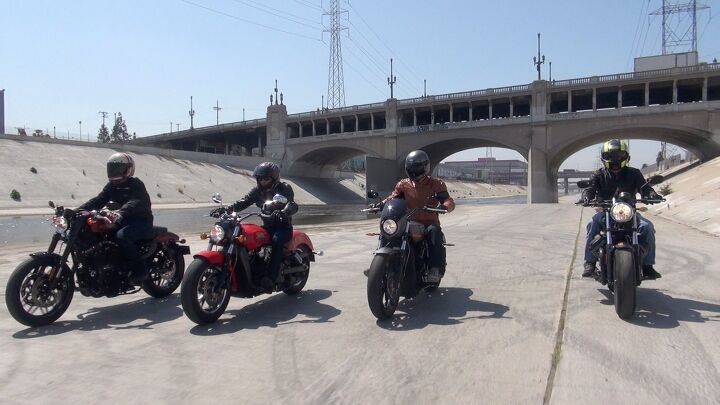
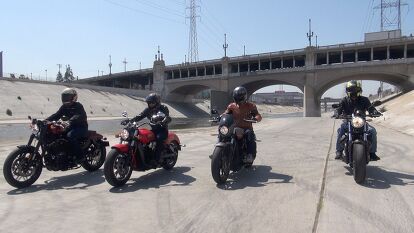

























































































































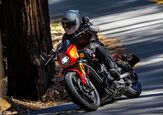
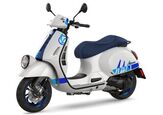
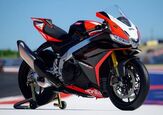
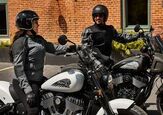
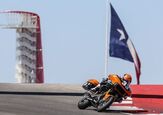
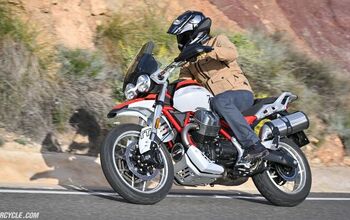

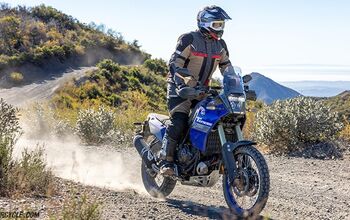
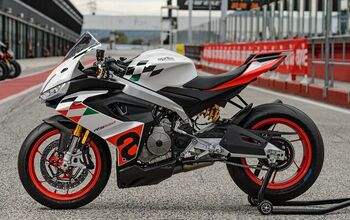
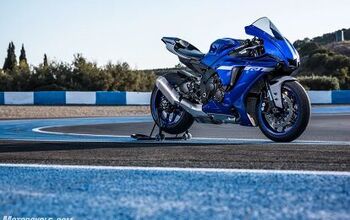
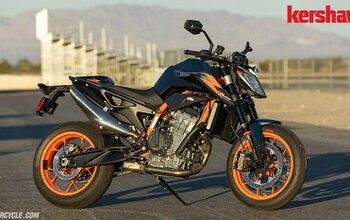
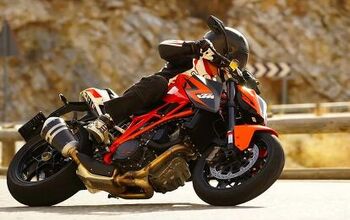
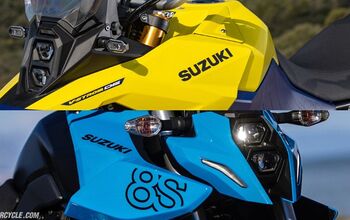
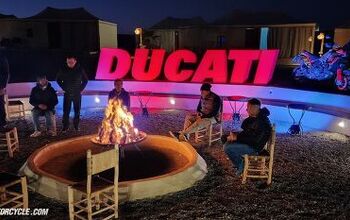
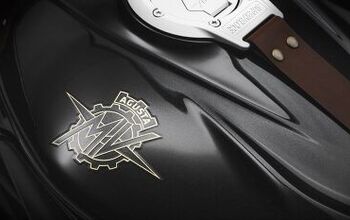
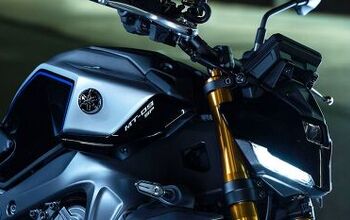
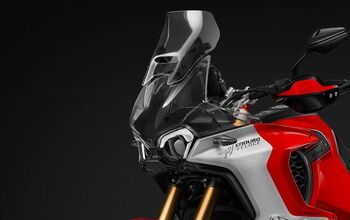

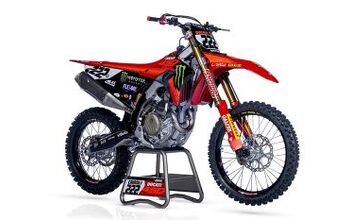
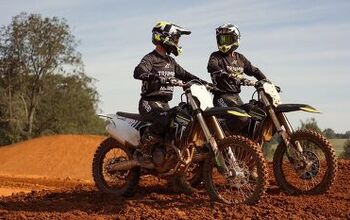
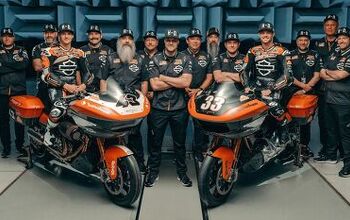

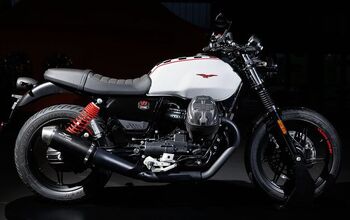
Comments
Join the conversation
You pretty much said the Scout and the Octane are the same bike but the Scout is better. I think your scoring system needs work.
I went to look at the Roadster at the HD dealer and I would have to say it is the nicest Sportster ever. Pound for pound the best deal ever.